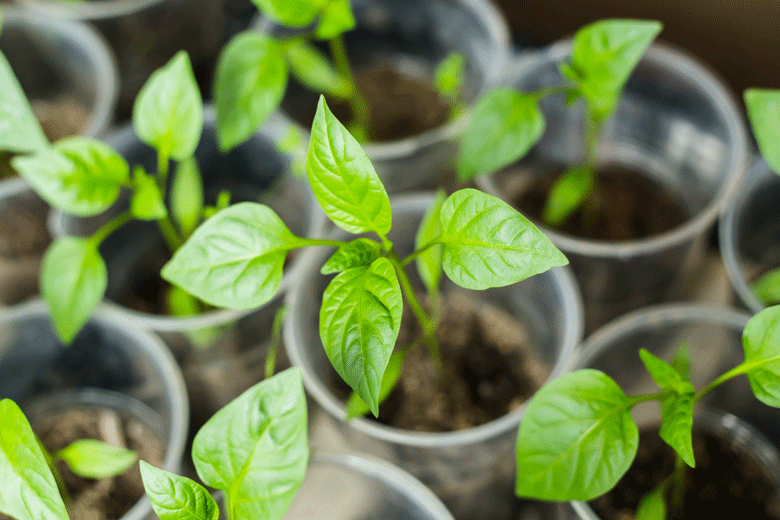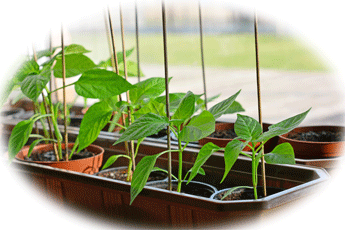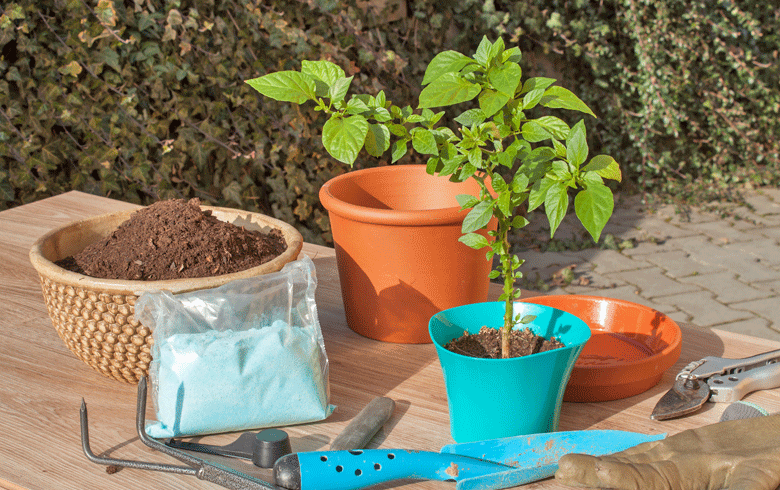 How to get rapid growth
How to get rapid growth
Unfortunately, there has not been much sunlight up to now this season. This has resulted in my Chillies being smaller than I would want them to be. To get a decent harvest I will need to find a way to make my Chilli plants grow faster. How do I do this?
They have been hardened off (acclimatized) to outside conditions. Some have now reached the size they are ready for their final potting on . The Chillies will finish the season in these pots. How I handle this step may make all the difference.
handle this step may make all the difference.
There is not much I can do about the lack of sunlight. What I can do though is look into other ways of encouraging growth. I want to determine whether fertilizing them differently will have any significant impact. It is certainly worth a try. There is nothing to lose.
Up to now, my seedlings have been fertilized with 5ml of Chilli Focus to every litre of water. They get fertilized in this way at every second watering. . Usually I fertilize at this dosage until the first sign of flowers. After that, the dosage is then doubled to 10 ml per litre of water.
I usually work on the basis that if something is working, don’t it fix? Usually I would have only used Chilli Focus, fish blood powder and chicken manure pellets for fertilisation. However, these are not normal circumstances. Drastic measures are being called for. I am now after rapid growth. Something else needs to be tried.
How can I boost growth?

Fertilization may be the key
In my opinion, if I want to stand a reasonable chance of speeding up growth, I will need to give the plants a boost. To do this, I will increase the elements for growth that can do exactly that. I will use a fertilizer I discovered last year. This fertilizer – Vitax Q4. contains high levels of Nitrogen and Phosphorous It also contains other trace elements needed for healthy plant development.
My belief is that increasing the levels of these elements will give the plants the tonic they need. It will, however, only be a once off. Vitax Q4 will not be used for continuous fertilization. It will only be used to prepare the pots for final potting on. After that, it will be back to Chilli Focus at the 5ml dosage level until the first sign of flowers.
After that, it will be back to Chilli Focus at the 5ml dosage level until the first sign of flowers.
At the first sight of flower buds, I will change to another fertilizer called Chempak 4. It is a fertilizer that contains high levels of potash. High levels of potassium can encourage flower formation and fruit set. I will use Chempak 4 from the onset of the flowering stage right through until the end of the season.
Fertilizer packaging provides information on what its NPK ratio is. NPK is a declaration of what the ratio of Nitrate/Phosphorous/Potassium is in the fertilizer. Nitrogen stimulates plant growth and leaves., Phosphorous promotes root growth, and Potassium encourages fruit formation
Viatx Q4 has an NPK of 5.3: 7.5: 10 (Chilli Focus 2.98: 0.4: 3.8). The new fertilizer is dry and pelleted, and contains other trace elements. The additional elements include Magnesium, Boron, Copper, Iron, and Manganese. These elements are necessary (at smaller levels) for healthy plant growth. It is applied at three quarters of a tablespoon per gallon of soil.
What soil to fertilizer mix ratio to use?

How much fertilizer to use?
A typical mix for a 5 gallon (12 inch) container would be 3 to four tablespoons of fertilizer, a handful of lime and 4.5 gallons of potting soil. Coconut coir can also be added. To add it, just reduce the soil content. This ratio can be pro-rated according to the size of the pot you decide to use.
This ratio only applies to growing in pots. Planting directly into the soil will be different. In this case, consult the instructions provided with the fertilizer you will be using. Also, do this before using the guidelines above.
Procedure for mixing the soil fertilizer and lime
- Half fill the container with soil. Next, add half the fertilizer and lime ( The lime helps prevent blossom end rot). Mix it in,
- Apply a sprinkling of water to moisten the soil.
- Mix the remaining soil, fertilizer and lime in a separate container.
- Remove the plant from its current container. Place it on top of the soil in the half-filled large container
- Now pour the remaining soil into the container in equal quantities around the plant.
- Press the soil down firmly around the sides
- Finally, add more water to the top layer.
- That’s it. Job done
Finally
One thing to remember when fertilizing plants is that too much is not good. It is better to give your plants too little, and add more later if needed. Too much fertilizer can actually damage plants, so it is better to be on the side of caution. Rather start with less and then build up the dosage if you find it beneficial to do so.
